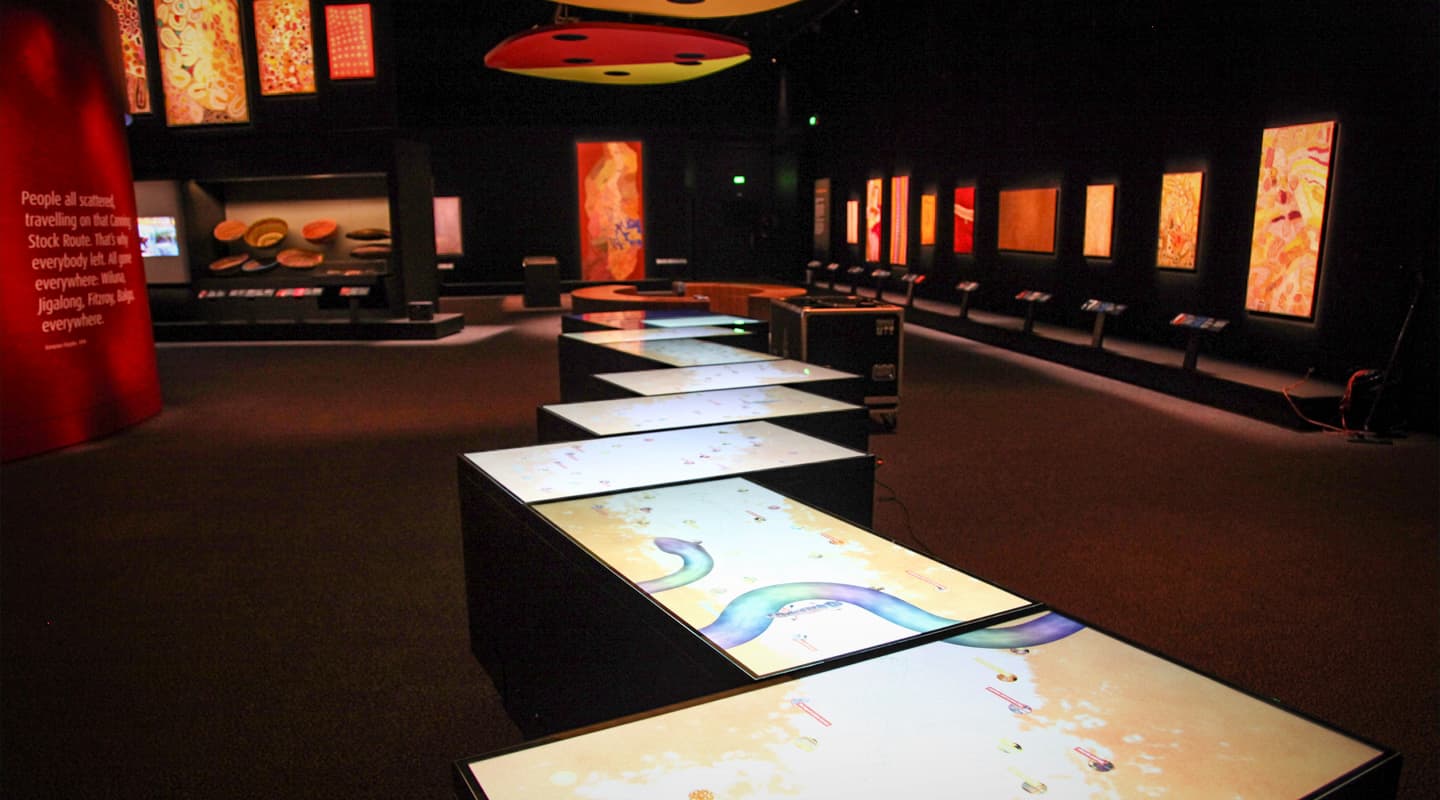
Taking Stock
The NMA’s new multi-touch exhibit brings the Canning Stock Route to your fingertips.
Text:\ Graeme Hague
Images:\ Courtesy Lightwell
For those people who have a taste for the genuine Australian outback, taking their massive 4WD cruisers with roof racks and ‘roo bars, huge antennae with pennant flags, extra cans of petrol stacked to the skies, spare tyres bolted to the windscreen wipers – you know the type – well, for them the Canning Stock Route is an exciting, heart-thumping challenge. A real adventure. Good on ‘em, I say. For folks like me, who regard a three-star motel room as akin to taking part in a bad episode of Survivor, travelling the Stock Route is a silly idea. It was, and still is – at a tad under 1800km long – the longest historic stock route in the world. It traverses some of the most inhospitable country in Western Australia (ignoring the Northbridge nightclub strip momentarily), filled with endless deserts, sand dunes and a vast array of wildlife that can kill you with a single spit. There’s got to be an easier way to see it that doesn’t involve getting bogged, bitten and scorched every five minutes.
Good news, there is an easier way to see it.
STOCK SHOTS
For much of the early part of the 20th century the Canning Stock Route was the only way to get cattle overland from the verdant grasslands of the Kimberly region to a railhead at Wiluna and during that time there were also a fair number of outraged indigenous clans who wanted to kill you, too. They resented the stock route denying them their own land and access to water. With that kind of dramatic history it’s only right that the Canning Stock Route (CSR) deserves a new multi-screen audiovisual display called ‘One Road’ in Canberra’s National Museum of Australia (NMA). It’s a signature part of the overall Yiwarra Kuju Exhibition, mostly told in traditional paintings, which is a focus on the many perspectives of Aborigines who grew up in the country around the stock route, including those who worked as drovers and those who strongly opposed what they regarded as trespassing on their land.
The central component of the display is an array of 10 x 46-inch MultiTouch Cell displays configured in what is claimed to be the first asymmetric multi-touch installation for a museum exhibition. The combined units are more than 7m long and enable visitors to stand around corners and collaborate on the panels as a single, connected display. The design encourages use by more than 20 people at a time. The whole point of the staggered alignment is to allow for a reproduction of the actual shape of the stock route, properly following the course of the route via the connected screens as they spread across the floor of the gallery.
Interactive markers are placed in their correct geographical positions according to the information they bring forward, with other touch points put around the periphery of the map for the less location-specific material. The display offers instant multi-touch access to both historical and contemporary detail, including paintings, film and other cultural works, as well as a rich oral and visual record. The exhibit features more than two hours of video, over 70 paintings and about 100 separate stories by artists from the countryside surrounding the stock route. From start to finish, the project took 12 months to complete, building on a three-year undertaking by the Western Australian creative arts organisation FORM, in partnership with nine Aboriginal community art centres.
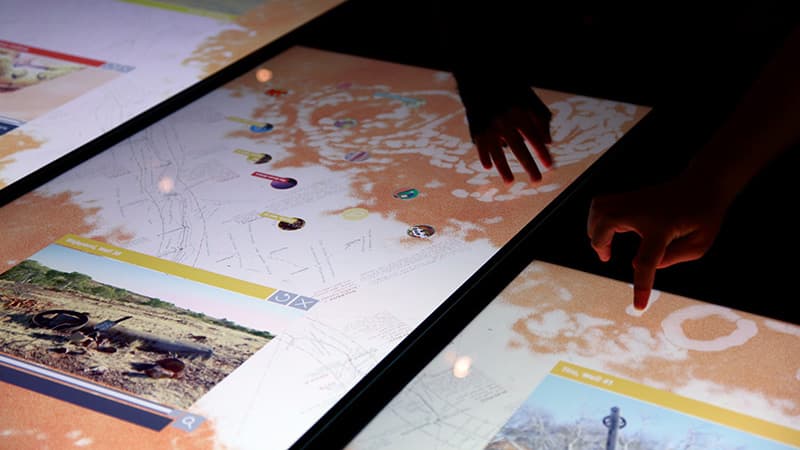
“”
As you paint … three-dimensional characters such as lizards and snakes crawl across the screen
MULTITOUCH: HARD CELL?
While Sydney-based Lightwell supplied and installed the MultiTouch Cell panels, the NMA’s own multimedia department undertook all systems design, coding and integration for the exhibition. NMA’s Sean McKinty programmed both MultiTouch panels and the AMX system and oversaw the connection of all data and audio streams between the control system, power controllers, amplifiers, and speakers for the MultiTouch panels. Andrew Shaw joined the NMA team a little after the project commenced and after doing some catching up took on the technical management and purchasing. An AMX NXI NetLinx integrated controller fitted with an NXC-ME260 Ethernet master card lies at the heart of the AMX system, offering a user interface via a wall-mounted AXD-MCP 5.5-inch colour touchpanel.
Each of the five Ubuntu (Linux) PCs running the interactive table system communicates with a pair of the MultiTouch panels via the proprietary TUIO protocol. The software for the panels was developed using C++, OpenGL and the MultiTouch Cornerstone SDK, to create a native Linux application. The system includes a watchdog application that tracks system lockups and hardware health and raises the appropriate alerts. XML and other standards were used for all content resources, to enable easy management during development and, perhaps more importantly, for support and maintenance by the NMA staff on site.
MultiTouch’s patented computer vision system, which reads up to 120 frames per second in bright daylight or dark environments, can react to unlimited touch points including hands, fingers, fingertips and 2D markers across the table surface. Talking of fingertips, this highlights one of the more unique aspects of the display, the opportunity for users to try their own hand at making art.
ART GIVEN THE FINGER
The table offers virtual sand for finger-drawing and also canvases where visitors can do finger paintings using a range of colour palettes. All the while as you paint, around you and in other areas, audio recordings and video presentations plus three-dimensional characters such as lizards and snakes crawling across the screen are playing their part in the display. It’s this amount of depth and variety that the One Road interactive table provides concurrently and to such a large number of simultaneous participants that – you have to agree by present standards (which admittedly last about two weeks before someone sets new ones) – is pretty impressive.
Attracting a crowd can cause problems by itself, in this case overlapping fields of audio as users standing next to each other trigger different sound files. Each of the 10 panels has an associated pair of SoundTube speakers, so it’s theoretically possible to have 10 competing audio presentations playing at once. The design teams thought long and hard about this and considered solutions such as prioritising playback in a first-come first-served basis or maybe queuing files, but in the end it was deemed that the placement of the speakers on the screens, combined with the asymmetric array and low volume levels, meant that enough separation was achieved without too much interferance. Besides, every interface provided playback controls for users to rewind, pause or repeat the audio if needed and, as an added safety net, most of the content was augmented by subtitles.
STOCK ROUTE, ON THE ROAD
The entire Yiwarra Kuju exhibition, including the One Road Canning Stock Route Interactive Table, is scheduled to go on a national tour after finishing its season at the National Museum of Australia. Beyond that, negotiations are in the pipeline for potential displays in Asia and the Unites States. This was always in the planning and an integral part of the design and development process was about everything being able to travel. The interactive table can be dismantled into components that can be roadcased and the control equipment is already in racks ready to go.
In the end, the biggest challenge for Michael Hill from Lightwell and Andrew Shaw’s crew at NMA wasn’t anything to do with hardware or the efficiency of any software – all that worked fine thanks to MultiTouch. The hardest part was the actual design of the One Road interactive experience. A team that included FORM, the Museum, filmmaker Nicki Ma, exhibition designer Susan Freeman, indigenous multimedia producers and the artists whose paintings are featured in the exhibition collaborated in the artistic endeavour of creating a display that catches visitors’ attention and keeps it for the whole virtual journey along the dangerous Canning Stock Route, down the twisting dirt road of 10 multimedia touchscreens.
That’s successfully achieved without any flat 4WD tyres, boiling radiators or deadly critters trying to bite you. It sounds like the perfect kind of adventure to me.
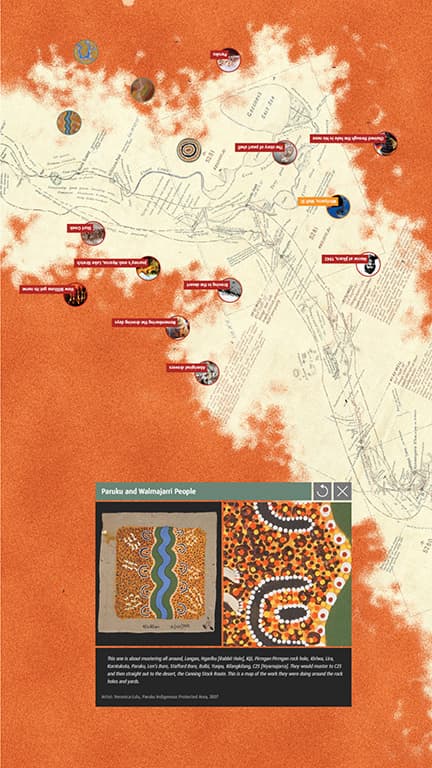
More on the Yiwarra Kuju exhibition can be found at: www.nma.gov.au/exhibitions/yiwarra_kuju/
More information of on the Canning Stock Route project can be found at: www.form.net.au/aboriginal-development/canning-stock-route-project

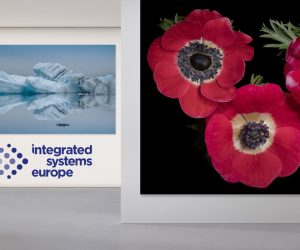



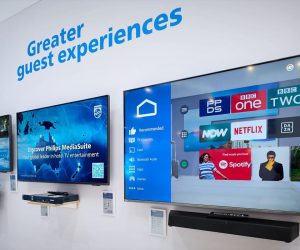

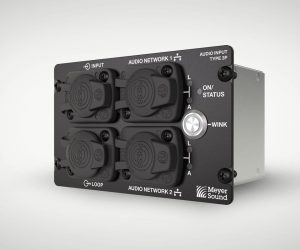

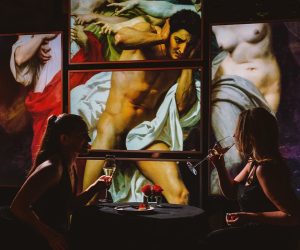





RESPONSES